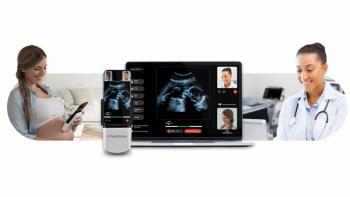
Ultrasound Images Identify Thyroid Cancer in Low-Risk Group
Ultrasound imaging of thyroid may identify cancers among low-risk patients; decrease rate of unnecessary thyroid biopsies.
Ultrasound imaging of the thyroid may help identify low-risk thyroid cancer patients, according to a study published in
Researchers from the University of California, San Francisco, undertook a study to quantify the risk of thyroid cancer associated with thyroid nodules, based on ultrasound imaging characteristics.
The retrospective, case-controlled study assessed 8,806 patients who underwent 11,618 thyroid ultrasound examinations from January 2000 through March 2005. A total of 105 patients were subsequently diagnosed with thyroid cancer.
It was found that thyroid nodules were common among patients who had thyroid cancer (96.9 percent) and also among those who did not (56.4 percent).
The researchers noted that there were three ultrasound nodule characteristics that were only associated with the risk of thyroid cancer:
· Microcalcifications
· Size greater than 2 cm
· Entirely solid composition
It was determined that most cases of thyroid cancer could be detected if biopsies were performed based on using one characteristic as indication for the procedure. Two characteristics as basis for biopsy would bring the sensitivity and false-positive rates lower with a higher positive likelihood ratio.
These results showed the rate of unnecessary biopsies could be reduced by 90 percent while maintaining a low risk of cancer if there were a more stringent approach for performing biopsies, researchers said.
"Adoption of uniform standards for the interpretation of thyroid sonograms would be a first step toward standardizing the diagnosis and treatment of thyroid cancer and limiting unnecessary diagnostic testing and treatment," the study concluded.
Newsletter
Stay at the forefront of radiology with the Diagnostic Imaging newsletter, delivering the latest news, clinical insights, and imaging advancements for today’s radiologists.




























